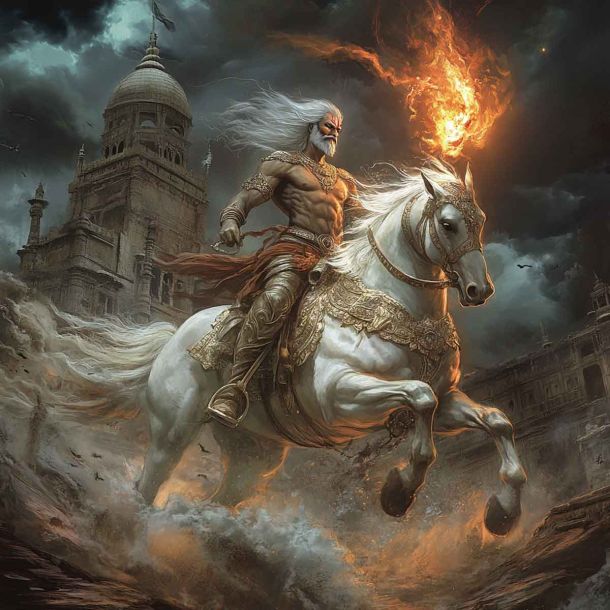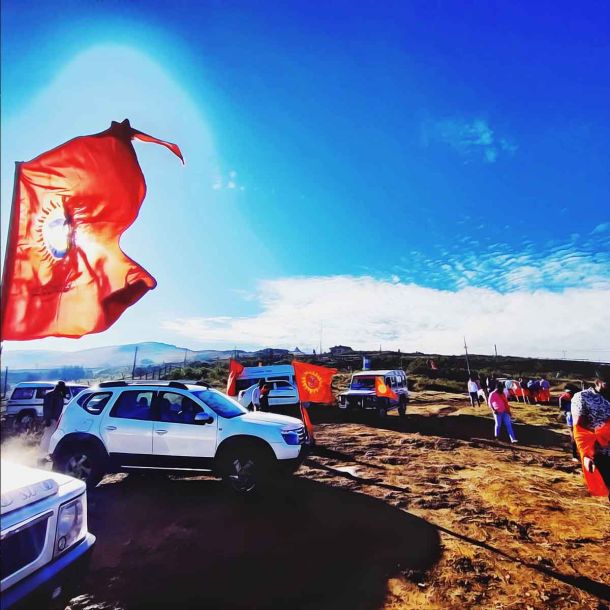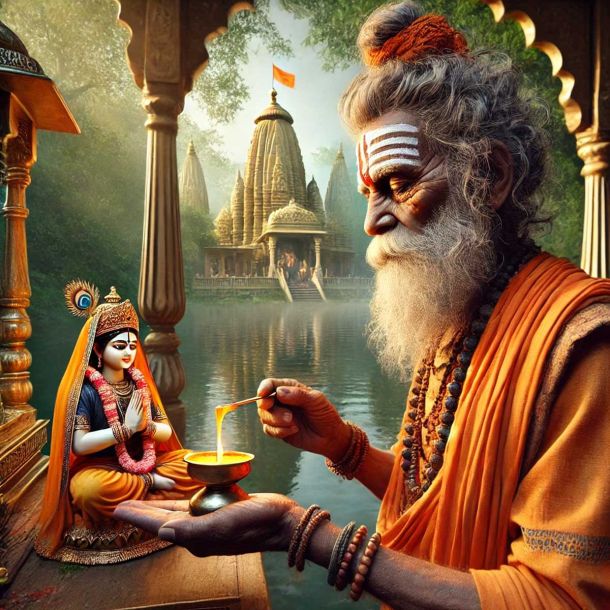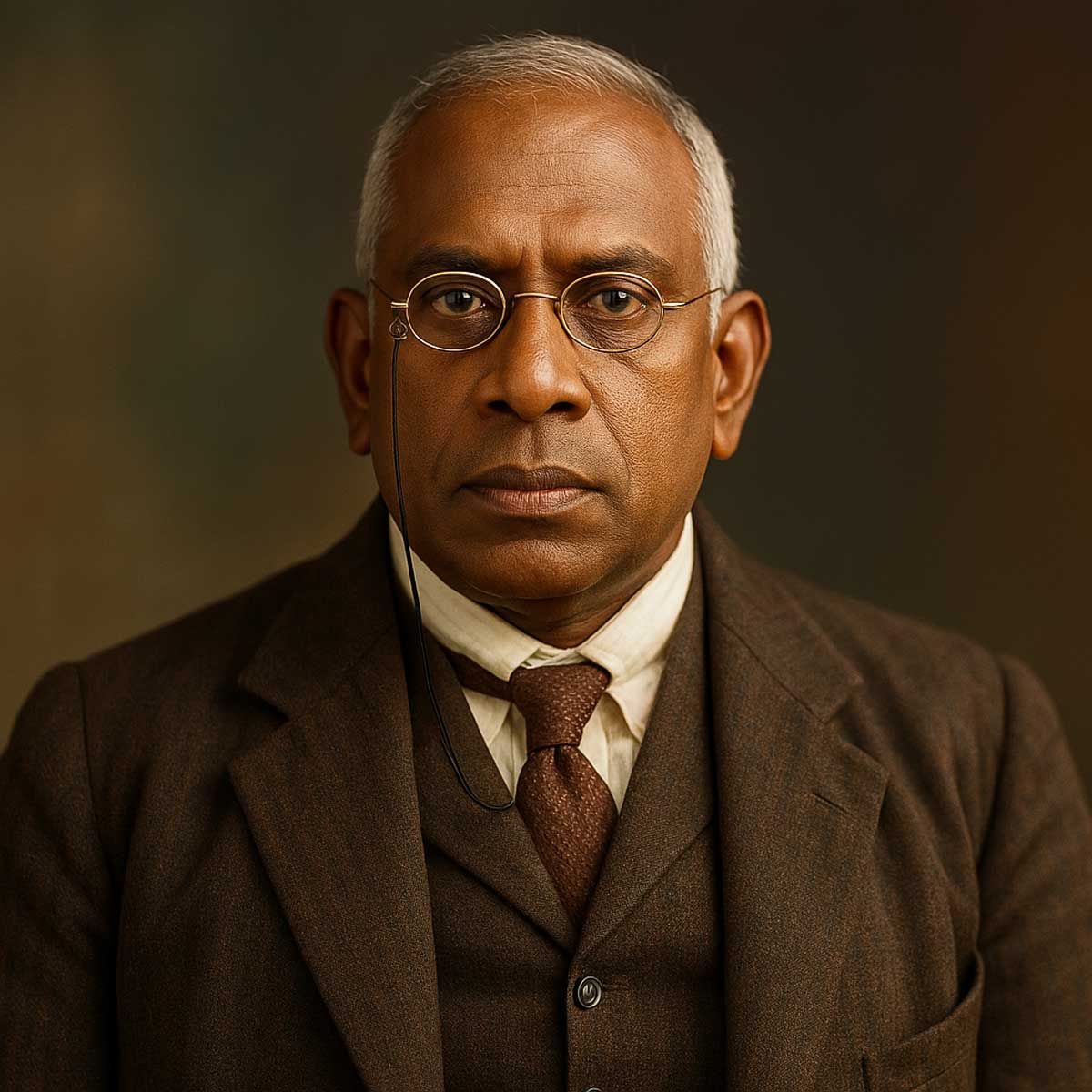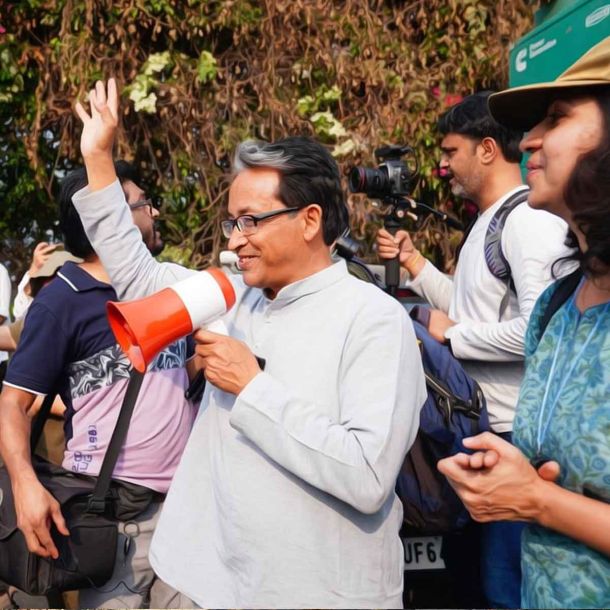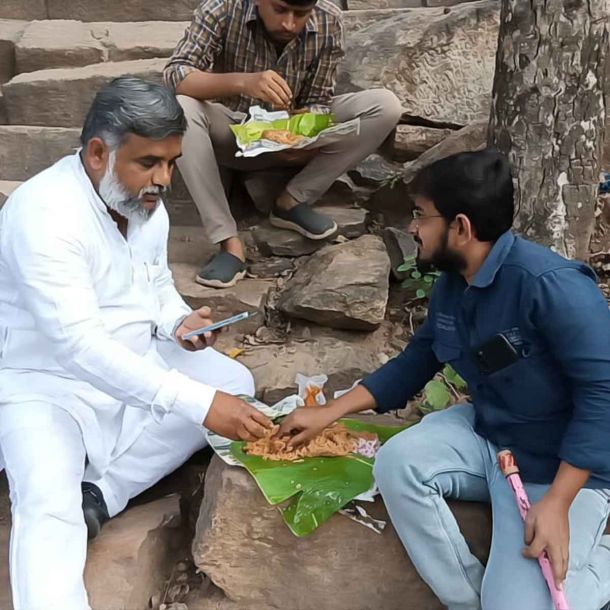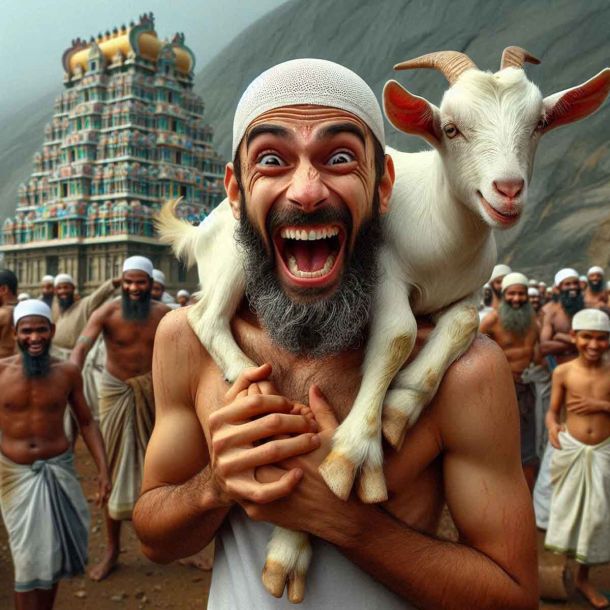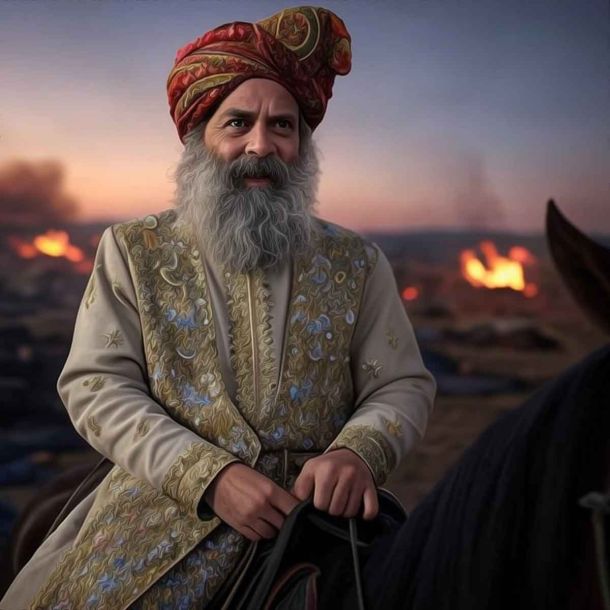More Coverage
Twitter Coverage
Satyaagrah
Written on
Satyaagrah
Written on
Satyaagrah
Written on
Satyaagrah
Written on
Satyaagrah
Written on
Join Satyaagrah Social Media
"Redefining the Perception of Caste: Insights from Swami Vivekananda": - Colonial era marked the beginning of a concerted effort to vilify Hindu Dharma & caste became a potent weapon in their campaign to exploit caste fault lines to criticize Hindu Dharma
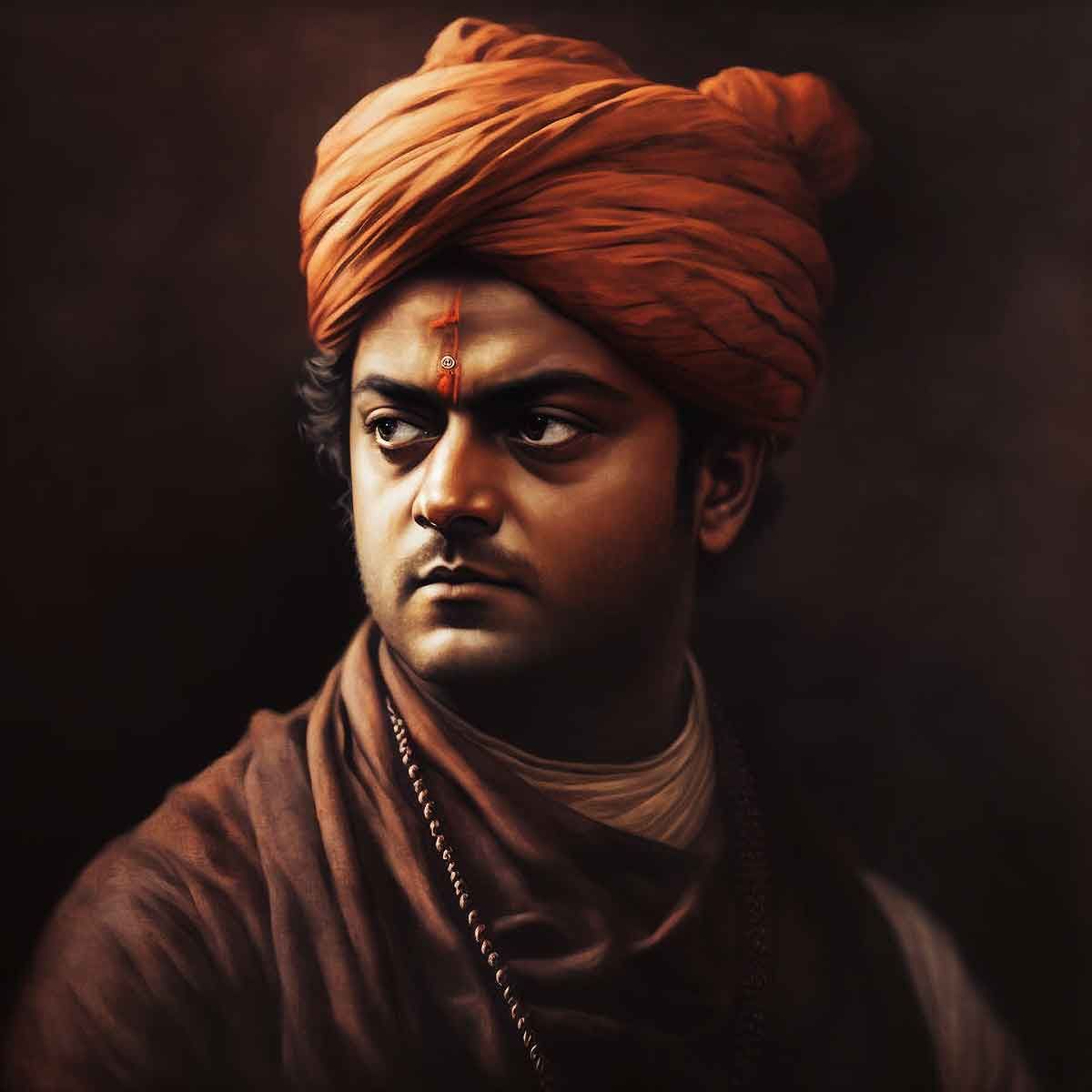
The colonial era marked the beginning of a concerted effort to vilify Hindu Dharma. British colonizers, with their condescending attitudes, aimed to diminish the rich tapestry of Hindu traditions, ridiculing practices such as ritualism, idol worship, superstition, and most notably, the complex caste system.
Caste became a potent weapon in their campaign to undermine Hindu Dharma. Astonishingly, even today, some Western thinkers and Indian commentators, trapped in the clutches of the colonial hangover, continue to exploit caste fault-lines to criticize Hindu Dharma.
Amidst this backdrop, Swami Vivekananda, a revered and universally acknowledged authority on Hindu Dharma, provides invaluable insights. To confront the challenges posed by both internal and external forces—those who cling to the notion of hereditary caste and those seeking to fracture Bharat along caste fault lines—we must turn to his wisdom.
Swami Vivekananda astutely distinguished between the original caste system, which he believed was based on qualities and aptitudes, and the degenerate form of the caste system that emerged later. He acknowledged the existence of an ideal caste system, one that honored and recognized individual talents and virtues, allowing each person to contribute their unique gifts to society. This caste system, as envisioned by Swami Vivekananda, was an organic framework that fostered cooperation, complementarity, and social harmony.
However, he was acutely aware of the corruption and distortion that had permeated the caste system over time. The degenerate form of caste system, marked by rigid social hierarchies, discrimination, and oppressive practices, was a far cry from its original intent. Swami Vivekananda vehemently rejected this perverted manifestation and recognized it as a hindrance to the progress and unity of Bharat.
In the face of ongoing debates surrounding caste, Swami Vivekananda's teachings continue to resonate. His profound insights urge us to reclaim the essence of the ideal caste system, to discard the oppressive remnants of the degenerate form, and to strive for a society that values individuals based on their character, talents, and contributions rather than their birth or lineage.
To understand Swami Vivekananda's perspectives on caste is to embark on a journey of self-reflection and transformation. It is an invitation to shed the shackles of divisive narratives and engage in a nuanced discourse that fosters unity and inclusivity. By embracing his teachings, we can challenge the deeply ingrained biases and prejudices that perpetuate the caste fault lines within our society.
Swami Vivekananda's vision of Hindu Dharma transcends the limitations imposed by colonial narratives and offers a path toward a more enlightened and progressive society. His teachings inspire us to reclaim our cultural heritage, to celebrate the inherent dignity of every individual, and strive for a society that values unity in diversity.
As we navigate the complexities of contemporary challenges, let us heed the wisdom of Swami Vivekananda. Let us embark on a collective journey of understanding, reconciliation, and transformation, where the true essence of the caste system is restored, and Hindu Dharma shines forth as a beacon of harmony, equality, and universal love.
The Essence of the Original Caste System: Insights from Swami Vivekananda
Swami Vivekananda, a profound thinker, and spiritual leader, shed light on the essence of the original varna system, providing us with valuable insights into the concept of caste. According to him, a person's caste was determined by the qualities or gunas they possessed. The combination of the three gunas—Sattva, Rajas, and Tamas—would determine whether an individual belonged to the Brahman, Kshatriya, Vaishya, or Shudra varna. Swami Vivekananda pointed out that there was clear evidence of caste being based on qualities in ancient texts such as the Bhishma Parwa and in stories like those of Ajagarhas, Uma, and Maheshwar.
He emphasized that the caste system existed in every society composed of individuals skilled in different occupations. However, he highlighted that Bharat's caste system aimed to elevate all individuals to a higher level of consciousness, ultimately leading to a society without distinct castes. In contrast, he observed that European civilizations had thrived by suppressing and eliminating others, an approach that hindered harmonious progress.
Swami Vivekananda believed that the original caste system was flexible, as exemplified by the lives of Parshuram and Bhishma. Individuals had the potential to transcend the caste they were born into and acquire a caste suitable for their aptitude and inclinations. He also noted that communities as a whole had the opportunity for upward mobility and flexibility. Certain communities, through their collective efforts, had elevated their members to a higher state of consciousness, earning recognition within the Brahman fold. In some instances, the norm was to transcend the constraints of birth caste, uplifting all members of the community in the process.
He suggested that over time, the social order had evolved for the better, offering evidence of progress. For instance, privileges granted to the Chandala caste had increased through the ages. Initially, Shudras were prohibited from listening to the Vedas, but later Smritis encouraged Shudras who aspired to embody Brahmin qualities.
Swami Vivekananda held the view that the original societal structure of caste in Bharat was praiseworthy. Unlike other parts of the world where the warrior class held the highest honor, in Bharat, the highest honor was bestowed upon the Brahman—not a hereditary Brahman, but an individual who possessed the qualities of a peaceful and godly person.
“Degenerated” caste system
Swami Vivekananda described caste as a natural order. Citing examples, he said that one person can mend shoes, another can govern. Each can’t do what the other person can. However, the one who governs isn’t superior to the one who mends shoes and does not earn the right to “trample on the head” of the other. This, he opposed.
“The son of a Brahman is not necessarily a Brahman.” The spiritual make up of man determines what caste he is since “every individual is a centre for the manifestation of a certain force.”
Even a Chandala can expound philosophy to a Brahman, Swami Vivekananda believed. “Most of the Upanishadas were written by Kshatriyas—most of our great teachers have come from Kshatriyas—Ram and Krishna and Buddha worshipped as incarnations of God were Kshatriyas.”
“Caste on the principle of birth is bondage…” he said.
Just as Brahmans are above the set law, similarly, all individuals and communities who reach this higher consciousness can transcend the set societal laws. The Brahman here is the one “who has killed all selfishness and who lives and works to acquire and propagate wisdom and power of love.” If and when a whole country is composed of such Brahmans, no law enforcement is needed to govern the citizens. This, he stated, is true of the Satya Yuga, when all society is composed of just one caste, the Brahmans.
In fact, Swami Vivekananda postulated that since the time of the Upanishads, nearly all the great teachers have wanted to break caste in its degenerate state. The original caste was according to him, a “glorious institution.”
He quoted Shri Krishna’s words in the Gita, “He who sees the Supreme Lord dwelling alike in all beings…… he sees indeed.”
He felt that it was ironical that “No religion on earth preaches the dignity of humanity in such a lofty strain as Hinduism and no religion on earth treads upon the poor and low in such a fashion as Hinduism.”
He believed that it was necessary to preach “the wonderful idea of sameness and omnipresence of the Supreme Soul for the amelioration and elevation of the human race” in Bharat and elsewhere.
“Why must one who commits a murder be praised and another who steals an apple be hanged? This must go.”
Caste as a social order, not a part of religion
An important distinction he made was between religion and social degeneration. Given the challenges posed to Hindu Dharma by evangelical faiths, this distinction needs to be highlighted.
“All the reformers in India made the serious mistake of holding religion accountable for all the horrors of priest-craft and degeneration and went forth to put down the indestructible structure; and what was the result. Failure! Beginning from Buddha to Ram Mohan Roy, everyone made the mistake of holding caste to be a religious institution, and tried to pull down religion and caste all together, and failed.”
Caste and institutions appear to be linked with religion, but are not so. “Caste is a social custom.”
“Caste is now simply a crystallized social institution which after doing its service is now filling the atmosphere of India with its stench and can only be removed by giving back the people their lost social individuality.”
For furthering his case about the necessity to separate religion from prevailing societal structures and norms, Swami Vivekananda discussed the Vedas and Smritis and explained that Hindu scriptures (Shastras) contained two kinds of truths:
1) Those based on eternal nature of man and dealing with man’s eternal nature with God, soul, and nature.
2) Local circumstances and environments of the time, social institutions of the period.
The Vedas contain the first kind of truths. The second kind are found in the Smritis, Puranas, etc. “We must remember that for all periods, the Vedas are the final goal and authority and if the Puranas differ in any respect from the Vedas, that part of the Puranas has to be rejected without mercy..”
This means that: 1) those Hindus who are defensive believing that the caste system was innate to Hindu Dharma, should cease to be defensive about prevailing societal structures of previous times, and 2) those who persistently believe that they belong to the caste they were born into, irrespective of their gunas and spiritual make up, should snap out of these archaic ideas.
“Where do you find the Indian society standing still?” He said that caste and rituals would change and so would forms but the substance and principle would not change. Other than the Vedas, all books must change. He felt that a certain Smriti is powerful for one age, another for another age.
Eternal truth will never change, it is there for all times, but the Smritis that generally speak about local circumstances change in the course of time. “This you have to always remember that because a little social custom is going to be changed, you are not going to lose your religion.”
Evolving Social Structure
Still, he was grateful that the “degenerate” caste system received a body blow due to British rule. He spoke of North India where one could find Brahman “wine distillers, shopkeepers, and shoemakers…”each man is now free to choose what livelihood he wants.”
“The English government has been the instrument brought over by the Lord, to break your crystallized civilization.” Customs had already changed and as time passed, more of these would go. “Sages will direct society into better channels –as per the necessity of the age.”
Vociferous about doing away with caste, he said, “Let us be as progressive as any nation that ever existed and at the same time, as faithful and conservative towards our tradition as Hindus alone know to be.”
Linking the notion of eliminating birth-based caste with compassion for lower classes, he was a self-confessed socialist who felt that elevating lives of the lowest oppressed classes was the only way in which a society could progress. He gave examples of preachers such as Ramanuja, Shankara, Nanak, Chaitanya, and Kabir, all of whom had compassion for the lower classes, the outcaste (pariah).
Priesthood’s role in caste and blind ritualism
He was forceful also in his criticism of priests and priesthood. He faulted priests for preaching that “people can enter the Holy of the Holies only with the permission of the priests,” and attributed this to an “immense thirst for power.”
Of priests of the time he said, “They describe simple truths in roundabout ways.”
He lauded the true Brahmans of the earlier ages though, crediting them with bringing on the onset of spiritual development in Bharat. “The foundation of priestly power rests on intellectual strength and not on the physical strength of arms. Therefore, with the supremacy of priestly power, there is a great prevalence of intellectual and literary culture.” Due to the Brahman’s devotion, learning, wisdom, and renunciation “universal welfare and good is nursed by his spiritual power.”
But over time, true renunciation was replaced by “concealment, extreme selfishness, hypocrisy.” He attributed this to human nature being what it is. “They (Brahmans) began to arrogate powers and privileges to themselves.” Soon society became such that “even the wickedest Brahman was to be worshipped.” He felt this was natural since any group is reluctant to give up its privileges and tries to preserve them in all possible ways.
Equally critical of superstition and blind ritualism, he said priesthood had made Hindu society to become “Caught in the endless thread of the of the net of infinite rites, ceremonies, and customs, which it spread on all sides, as external means for purification of the body and mind, with a view to keeping society in the iron grasp of these innumerable bonds—the priestly power, thus hopelessly entangled from head to foot, is now asleep in despair!”
An individual’s desire to progress becomes impossible to achieve if he remains “trammelled in the shackles of priesthood.” “Priest-craft is the bane of India” and “priests should be rooted out.”
Hindu Priesthood and Conversion
In fact, conversion of lower classes to Christianity he felt was a by-product of the degenerated version of priesthood.
“To what ludicrous state are we brought if a Bhangi comes to anybody as a Bhangi, he will be shunned as the plague, but no sooner does he get a cupful of water poured upon his head with some mutterings of prayer by a Padri, and get a coat on his back no matter how threadbare, and come into a room of the most orthodox Hindu—I don’t see the man who dare refuse him a chair and a hearty shake of the hands. Irony can go no further!”
Travancore, which Swami Vivekananda described as “the most priest-ridden” referring to Hindu priests, was a place where, by his estimates, nearly a fourth of the lower classes, adding up to lakhs, had been converted to Christianity by the Padris. (Hindu) priest-craft, he felt was cruel and heartless and religion goes down as priest-craft arises. Vedanta, he stated, says that “privileges must be given up, only then will true religion come to us”.
“Caste is a very Good Thing”: 7 times Vivekananda defended the Caste System
In 1984, when the then Indian Government declared January 12- the birth anniversary of Swami Vivekananda as National Youth Day, it had a very noble idea in mind. “It was felt that the philosophy of Swamiji and the ideals for which he lived and worked could be a great source of inspiration for the Indian Youth,” the government had then reasoned.
The 20th-century monk is regarded as a great thinker and social reformer, inspiring many with his ideas on liberty and free thinking. His ideas on the Indian caste system though need to be studied more carefully before according to him that place. To be clear, Vivekananda did not write a treatise on the caste system, and his views regarding the issue can only be gauged by reading his lectures and writings in their entirety.
A close reading of his work reveals a strange dichotomy. While Vivekananda was against untouchability and exploitation of the poor at the hands of the rich, in many of his lectures and speeches, he in fact praised the caste system, even going to the extent of calling ‘caste’ the ‘first idea of creation’.
According to him, “the original idea of Jati (caste) was this freedom of the individual to express his nature, his Prakriti, his Jati, his caste” and it was the social evils associated with it that needed to be done away. “He always is of opinion that the real, original caste system was highly beneficial one; and so, should be properly adjusted to suit modern societies, instead of being totally rejected,” a research paper on his work says.
Reading these excerpts culled from his complete works should be instructive in not only understanding Vivekananda’s ideas on the caste system but also whether modern Indian youth should follow him for inspiration.
- I do not propose any leveling of castes. Caste is a very good thing. Caste is the plan we want to follow. What caste really is, not one in a million understands. There is no country in the world without caste. In India, from caste, we reach to the point where there is no caste. Caste is based throughout on that principle. The plan in India is to make everybody a Brahmin, the Brahmin being the ideal of humanity.
- In an interview with The Hindu, February 1897
- Indian caste is better than the caste which prevails in Europe or America. I do not say it is absolutely good. Where would you be if there were no castes? Where would be your learning and other things, if there were no caste? There would be nothing left for the Europeans to study if caste had never existed! The Mohammedans would have smashed everything to pieces. Where do you find Indian society standing still? It is always on the move. Sometimes, as in the times of foreign invasions, the movement has been slow, at other times quicker. This is what I say to my countrymen. I do not condemn them. I look into their past. I find that under the circumstances no nation could do more glorious work. I tell them that they have done well. I only ask them to do better.
- You say we are heathens, we are uneducated, uncultivated, but we laugh in our sleeves at your want of refinement in telling us such things. With us, quality and birth make caste, not money. No amount of money can do anything for you in India. In caste the poorest is as good as the richest, and that is one of the most beautiful things about it.
- The Manners and Customs of India, Report in the Boston Herald, May 15, 1894
- Money has made warfare in the world and caused Christians to trample on each other’s necks. Jealousy, hatred, and avariciousness are born of money-getters. Here it is all work, hustle, and bustle. Caste saves a man from all this. It makes it possible for a man to live with less money, and it brings work to all. The man of caste has time to think of his soul, and that is what we want in the society of India.
The Brahmin is born to worship God, and the higher his caste, the greater his social restrictions are. Caste has kept us alive as a nation, and while it has many defects, it has many more advantages.
- The Manners and Customs of India, Report in the Boston Herald, May 15, 1894
- These are a few ideas in our religion. It is one of inclusion of everyone, and exclusion of none. Though our castes and our institutions are apparently linked with our religion, they are not so. These institutions have been necessary to protect us as a nation, and when this necessity for self-preservation will no more exists, they will die a natural death. But the older I grow, the better I seem to think of these time-honoured institutions of India. There was a time when I used to think that many of them were useless and worthless; but the older I grew, the more I seem to feel a diffidence in cursing any one of them, for each one of them is the embodiment of the experience of centuries.
- In reply to the address of welcome from the Hindus of Jaffna, Sri Lanka
- I have seen castes in almost every country in the world but nowhere is their plan and purpose so glorious as here. If caste is thus unavoidable, I would rather have a caste of purity and culture and self-sacrifice, than a caste of dollars. Therefore utter no words of condemnation.
- In reply to the address of the local Hindu community of Kumbakonam, Tamil Nadu
- Competition — cruel, cold, and heartless — is the law of Europe. Our law is caste — the breaking of competition, checking its forces, mitigating its cruelties, smoothing the passage of the human soul through this mystery of life.
- In reply to the Address of Welcome at Madras
This essay is sourced from the book “Caste, Culture and Socialism,” which is a compilation of “excerpts on this subject in a systematized form” from Swami Vivekananda’s message on caste “scattered all over the pages of his works.”
 Support Us
Support Us
Satyagraha was born from the heart of our land, with an undying aim to unveil the true essence of Bharat. It seeks to illuminate the hidden tales of our valiant freedom fighters and the rich chronicles that haven't yet sung their complete melody in the mainstream.
While platforms like NDTV and 'The Wire' effortlessly garner funds under the banner of safeguarding democracy, we at Satyagraha walk a different path. Our strength and resonance come from you. In this journey to weave a stronger Bharat, every little contribution amplifies our voice. Let's come together, contribute as you can, and champion the true spirit of our nation.
 |  |  |
| ICICI Bank of Satyaagrah | Razorpay Bank of Satyaagrah | PayPal Bank of Satyaagrah - For International Payments |
If all above doesn't work, then try the LINK below:
Please share the article on other platforms
DISCLAIMER: The author is solely responsible for the views expressed in this article. The author carries the responsibility for citing and/or licensing of images utilized within the text. The website also frequently uses non-commercial images for representational purposes only in line with the article. We are not responsible for the authenticity of such images. If some images have a copyright issue, we request the person/entity to contact us at satyaagrahindia@gmail.com and we will take the necessary actions to resolve the issue.
Related Articles
- Freedom struggle of Gurjars against Britishers at Koonja in 1824: 100s of Gurjars Martyred and 100s Hung in Single Tree
- 16 year old freedom fighter Shivdevi Tomar, who killed 17 Britishers and wounded many
- Tirot Singh: An Unsung Hero of the Khasi Tribe who destroyed British with his skill at Guerrilla Warfare
- Kartar Singh Sarabha - The Freedom fighter who was Hanged at the age of 19 and inspired Bhagat Singh
- "You don't have a soul. You are a Soul. You have a body": Anything lost, any work to be done, or any issue to be solved; first and foremost, people recall this divine 'Koragajja', one of the most sacred, worshipped, and sought-after spirits in Tulunadu
- Yes, Secular India’s shift towards ‘Majoritarianism’ is very much real: So, just deal with it
- PM Modi inaugurates rebuilt Shankaracharya samadhi in Kedarnath and said ‘Adi Shankara brought life to a sleeping civilisation, awakened Bharat to rise above caste boundaries’
- Hindus need temples today more than ever and here is why
- "A city where life and death intertwine in harmony": Green Farewell for the Dead - Varanasi’s Manikarnika and Ghat to soon have eco-friendly cremation chambers harmoniously blending the latest and most advanced technologies with the traditional ethos
- Hindu Survival: What Is Needed To Be Done?
- Unsung Heroine Pritilata Waddedar, Who Shook The British Raj at the age of 21
- Why Hindus not claiming their temples back from the Government control: Is pro-Hindu govt will always be in power
- Why India’s temples must be freed from government control
- "पितृ पक्ष": Amidst the chaos of modernity, the timeless ritual of ancestor worship stands firm, bridging the past & present, not mere tradition; its the soul's whisper, echoing gratitude & seeking blessings from those who once tread the paths we now walk
- Lakshmi Narasimha Swamy Temple, Antarvedi, Andhra Pradesh

